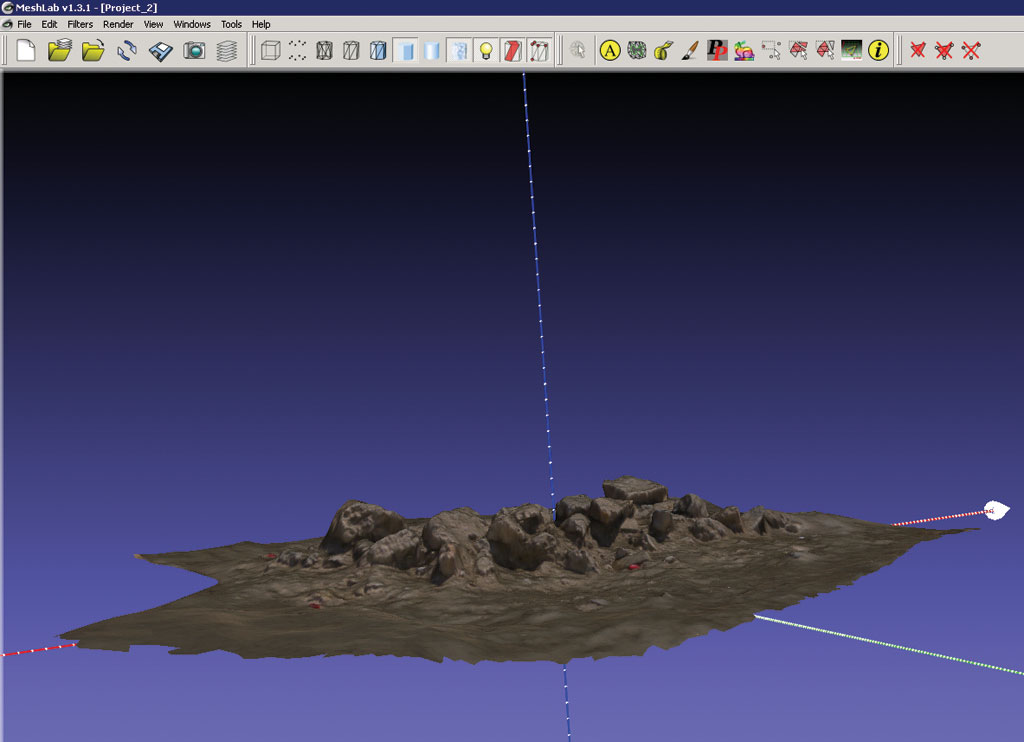

#Using meshlab how to
The challenge was how to turn this 2-D visual effect into a set of 3-D co-ordinates that could be turned into an. (I imagine if I could use Blender with Python this idea might have been better achieved.) I was short on time, inevitably, so I borrowed an existing piece that I liked from the gallery at : Color smoke" by Gerd Platl, a simple and rather beautiful sketch that draws thin rings, modulated by a little noise, and overlaps them across the screen, creating a fluid, warbling, smoke-like effect. I'm not much of a coder but I have a little familiarity with Processing.
#Using meshlab windows
Initially, my plan was create a 3-dimensional sound file, rendering the sound in 2D (like an windows media player visualisation) and stacking them up as a 3D object, possibly with some interpolation between the slices. Anyway, I had a few possibilities for this. One quick example of this is this small sculpture by Richard Wilson, in which he creates a simple but elegant form using the movement of a falling jug. This is basically how tomography works, too.īut these methods didn't have to be be limited to static objects - they could also be used to describe temporal changes in a 2-dimensional form, using the 3rd dimension to describe change over time. This is also the basic mechanism in some forms of 3D scanning, most obviously, "milk scanning", which involves submerging an object incrementally in a plain substance like sugar or milk and taking pictures of its profile, slice by slice, so that they can be put together again later. The association is quite intuitive if you consider how the printer, using the G-code, generates a cohesive mesh slowly, one layer at a time, effectively slicing it up. It would be nice to be a worm theorist.Īnyway, this got me thinking about slices of time in 3D printing context. Perdurantists can also be stage theorists, who conceive of time in terms of instantaneous time-slices. This was partly inspired by another class with Terry Knight's design and computation group in the department of architecture, where we discussed various philosophies of temporality in particular, the perdurantists, whose ideas were sometimes known as worm theory (understanding objects extending through time as an earthworm burrows through space). It was fun to play around with here you see a 3D relief pulled from a photograph of my gaping maw.Įventually, I figured that it might be fun and a bit more interesting to 3D print an object whose shape described a movement through time, such as a sound, a wave-form, or a procedural shape.

I don't think it's much good for modelling, but many features were great for cleaning up the model for print, more on which later.Īnother test involved a Fusion 360 script I found that turned bitmap tonal values into heightmaps. Meshlab, on the other hand, I found a bit difficult at first (it's a pretty bare interface with menus that list what seem like every image processing filter and algorithm I've never heard of - it comes out of a conference, you can tell) but as I got used to it, turned out to be extremely useful.

These were pretty boring, to be honest, but it was helpful to learn a few tricks on Blender.

The process in Blender involved the use of 'cell fracture' to create the formation, followed by a similar modifier for solidifying the shape. I followed a tutorial using Meshlab and then Blender to create some basic voronoi and other visual effects on solid objects, in this case a simple sphere. It's just a shape I like, although usually in a more animated form. I found that Blender had a nice wireframe modifier, which turned the wireframe mesh of a 3D model into a solid - turning the edges into solid bars, if you like - and I played around with the shape of a kind of toroidal vortex. Initially, I wasn't sure what to 3D print, but I'm still fairly new to 3D modelling, so I decided to follow some online tutorials and create some abstract shapes.


 0 kommentar(er)
0 kommentar(er)
